Would you like to learn more about all of the settings available in WPForms? In addition to tons of customization options within the form builder, WPForms has an extensive list of plugin-wide options available. This includes choosing your currency, adding GDPR enhancements, setting up integrations, and more.
In this tutorial, we’ll cover all of the settings available in the WPForms plugin.
- Accessing WPForms Settings
- Setting Details
Accessing WPForms Settings
To access plugin-wide settings in WPForms, you’ll need to go to WPForms » Settings in the admin menu.
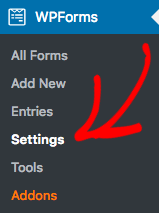
This will automatically open to the General settings tab, however you can click on any tab along the top of the page to access additional settings.

General Settings
Settings in the General tab are potentially relevant to all users, no matter which features or addons you use.

WPForms will, by default, add styles to ensure your form looks great no matter which theme you choose to use on your site. If you’re a developer looking to customize your forms, though, this dropdown will allow you to reduce the amount of styling that WPForms applies.
Our tutorial on the Include Form Styling setting covers all of the details, including what to watch for if you choose to alter this option from the default choice.
Load Assets Globally

WPForms is smart about how it uses your site’s resources, so it will only load assets (code for styling and JavaScript, etc) when a form is detected on the page. In rare cases, however, there may be something on a site that prevents this detection from working properly — and that may prevent assets from loading at all.
By choosing to Load Assets Globally, it’s often possible to resolve issues where form assets aren’t loading. If you’re considering enabling this option, it’s generally best to get in touch with our support team (or WhatsApp us on +254786715534) and find out if loading assets globally could be a good solution for the specific issue you’re seeing.
GDPR Enhancements
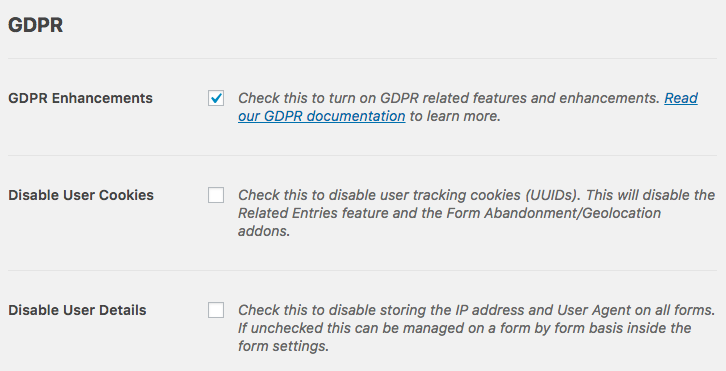
GDPR, or General Data Protection Regulations, is a set of policies by the European Union meant to help protect the privacy of EU citizens on the internet. WPForms offers a few ways to help you work towards compliance such as a GDPR Agreement field and an option to disable user cookies.
For all of the details on available GDPR options, please be sure to check out our tutorial on GDPR compliance in WPForms.
Email Settings
Settings under the Email tab will apply to notification emails for all forms on your site.
Note: This section will discuss plugin-wide email settings. If you’d like to change email settings for individual forms, be sure to check out our tutorial on setting up notification emails.
Template
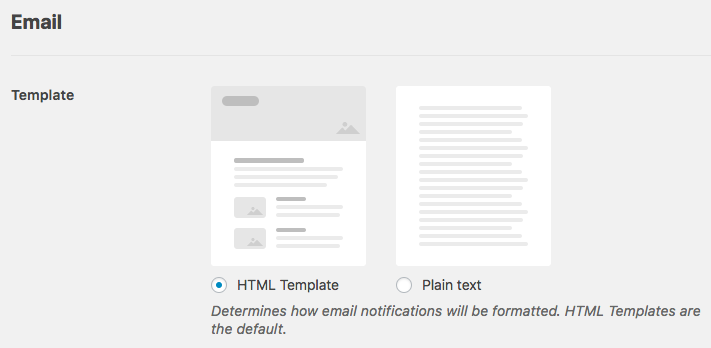
The Template option lets you easily decide whether you’d like to use HTML or plain text emails. To see examples of each type of email, please see our notifications tutorial.
Header Image

In this setting, you can upload an image that will display at the top of all form notification emails. For full details, including image size recommendations, please check out our tutorial on adding an email header image.
Background Color
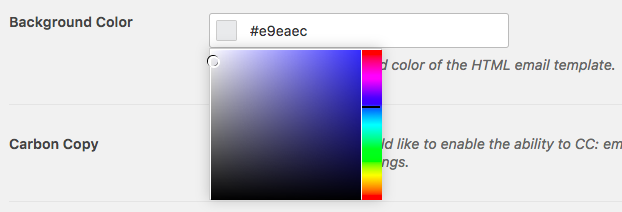
By default, all form notification emails will have a light grey background color. With this option, though, you can choose any background color you’d like with a simple color picker tool (or you can type in a hex value, if you’d prefer).
Carbon Copy

WPForms is designed with email privacy in mind, and so the Send To Email Address field (where you’d generally add all email recipients for a form’s notification email) acts like a BCC, or Blind Carbon Copy, field. This means that a separate email is sent to each email address, and the recipients can’t see one another.
If you’d like recipients to see one another’s email addresses, and be able to Reply-All on the email, a Carbon Copy (CC) field will be a better fit.
By enabling the Carbon Copy option, you’ll have the option to use a CC field in all of your existing and new forms.
For all of the details, as well as important usage notes, please see our tutorial on setting up notification emails.
reCAPTCHA Settings
WPForms includes built-in integration with Google’s reCAPTCHA, a super popular free service to combat spam.
If you’d like to enable this option on your site, please check out our tutorial on setting up reCAPTCHA in WPForms.
Type, Site Key, and Secret Key
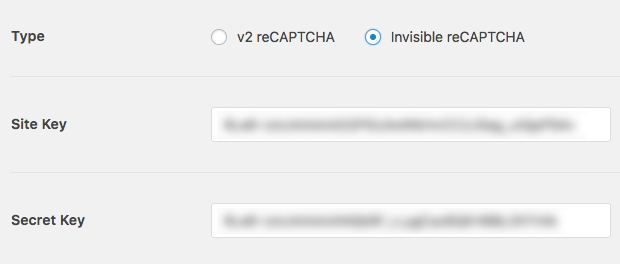
During the reCAPTCHA setup process, you’ll need to decide whether you’d like to use the traditional checkbox style reCAPTCHA or their newer “invisible” option.
You’ll also generate keys from Google, which are required to allow reCAPTCHA to be used on your site.
No-Conflict Mode

If reCAPTCHA is is being loaded more than once on your site (for example, by both WPForms and other plugin theme), this can prevent reCAPTCHA from working properly. When this conflict occurs, you’ll usually see a validation error when submitting a form even though you’ve completed the reCAPTCHA correctly.

No-Conflict Mode is a great fix if you’re sure that reCAPTCHA isn’t being used anywhere else on the pages where your forms are embedded.
However, we highly recommend getting in touch with our support team if you’re in at all unsure whether this option is a good fit for your site.
Validation Settings
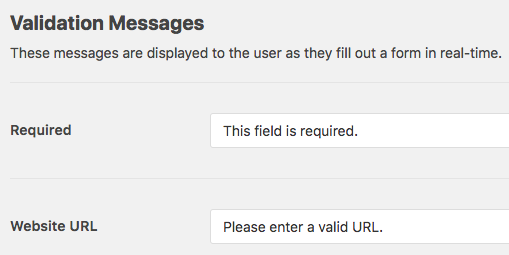
Validation messages are shown to the user when they fill out parts of your forms incorrectly. For example, if the user skips a required field they’ll see a validation message that states “This field is required.”

Under the Validation tab, you can easily customize these validation messages. This is useful if you need to translate messages into a different language, or even if you simply want these messages to reflect a unique voice for your brand.
